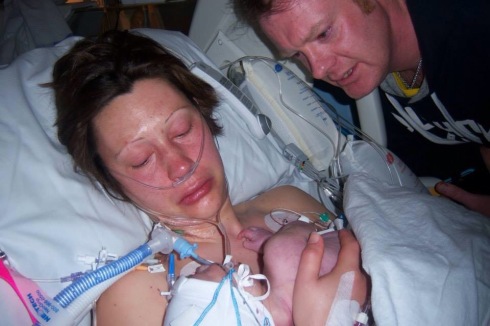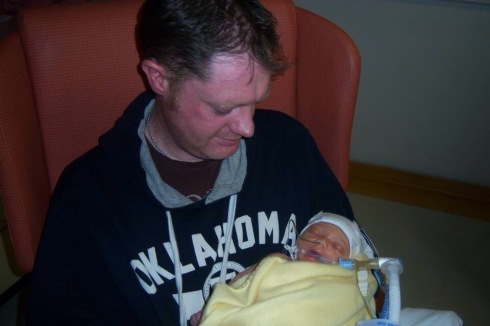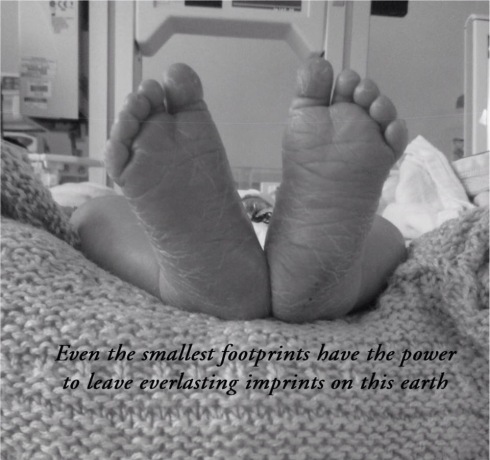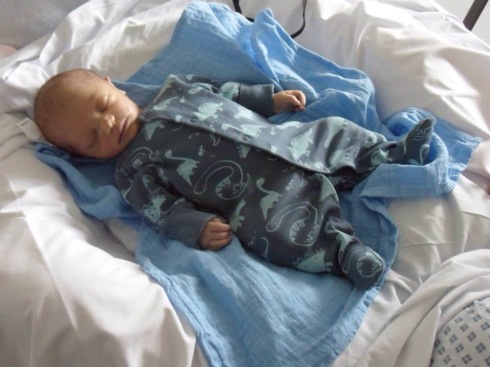Trigger Warning: this post contains information and pictures relating to the neonatal death of our son Tristan; If you are pregnant or any of these issues are a trigger for you please think carefully before continuing.
For Lot’s Wife
This is a story.
It begins: Listen! Paul Coxon has become unstuck in time
And it ends: Mummy and Daddy love you Tristan.
Listen! Paul Coxon has become unstuck in time.
It is said that Hassan al-Sabbāh (1050s-1124) trained his fearsome Ḥashshāshīn (Assassins) from his mountain stronghold of Alamut (now in North-West Iran) by first showing them paradise on Earth through a heady mix of strong Hashish and even stronger sweet wines. Once his devotees had grown a taste for this paradise, Al-Sabbāh withdraw the wine and the dope promising access would be returned if they carried out some small tasks for him. These small tasks usually involved infiltration, sedition or murder of some description, which his devotees jumped at the chance to carry out; thus is the allure of paradise. I have seen paradise, held him in my arms and lost it again almost as quickly. For the first time I understand its allure and would do anything to get it back.
“So how did you get on? How is fatherhood treating you?” My dentist asked in all innocence. She didn’t know, she couldn’t know, but it’s too late. I’m crying uncontrollably, anguished sobs rippling my body, sysmic shocks through jelly as I try to gasp my story before I slip beneath the weight of memory and drift…
As I write this, I am trembling uncontrollably, I have lost count of the times I’ve had to stop, eyes clouded with tears to compose myself before continuing. I need to finish this story, I need to set it free into the world where it will stay. This is not something I can keep inside, I am afraid of the consequences if I do. Sometimes the fire burns white hot, I can’t move, think and barely breath. I fear my core will begin creating iron in ever increasing quantities, then other heavy elements…Yeat’s Falcon in the widening gyre: ‘things fall apart their centres cannot hold’…and I will collapse in onto myself and then, fractions of a second later, explode. Supernovae, my fire will consume the world and I will be no more. So, this is a pressure release, painful as it is to write, this is therapy, strange and clumsy, but therapeutic.
For Kurt Vonnegut Jr, it was witnessing the fire bombing of Dresden as a prisoner of war during the dying days of World War Two that would temporarily sever his connection with time and which would form the basis of his cult classic novella, Slaughterhouse Five. I didn’t witness the collective, largely civilian, population of Dresden being bombed mercilessly by U.S. Warplanes, or walked with the wounded and dying through the remains of a huge city levelled in a few nights of concentrated malice.
No, my Dresden was a much quieter affair, though perhaps no more or less horrific. And it’s that easy, blink my eyes for too long and it’s the 6th April, a nurse with a kind smile advises me, “make sure you take lots of pictures.”
I didn’t hear her at first and so she prompted again. Nesting in the incubator before me, at the centre of a tangle of wires and tubes I am looking at my son for the first time:

This is Tristan. Isn’t he beautiful? I feel so proud that he is our son; even now my heart swells with happiness showing him off to you, my friends, though that happiness is followed quickly by deep horror and a sadness that regularly sweeps over me. It is brutal, it takes no prisoners, the Teller in a bank, my dentist, the little boy who tells me my superman trainers are ‘soooo cool’ I have cried at them all.
The neonatal consultant explains that our son is in a protective hypothermic state and what all His wires and tubes are doing. He shows me Tristan’s brain activity, says the next hours will be crucial if he is to make any sort of recovery. Starved of oxygen for close to 20 minutes, he doesn’t have to tell me how low the odds would be of a full recovery.
It’s 1:30am on Sunday 5th April and I have never been so frightened in my entire life. My beautiful wife, Lara, is fighting for her life in a theatre somewhere within the bowels of Coventry Hospital having suffered huge internal bleeding during the final stages of labour, no one is able to tell me this though, everyone who might be able to tell me this is busy with the practicality of saving Her life. I must wait another 5 hours before I find out she is stable and being moved to intensive care.
I spend the time leaning over Tristan’s incubator telling him all the things that I had waited 9 months to say. Swinging between giddy excitement and poorly stifled tears, I gabbled near stream of consciousness, “Your name is Tristan and I’m your Daddy…You need to get strong because when Mummy wakes up she is going to be so excited to meet you…your Granddad is here too to meet you…Until you and Mummy are strong Daddy is here and I’ll be your sword, I’ll be your armour”
Sometimes I would fall silent, simply put my index finger in the centre of his tiny open palm and will for any increase in pressure that would indicate a voluntary response on his part. There is nothing.
I sing to him, quietly and self consciously at first but eventually louder, all the songs my parents sang to me as a child, the songs I loved. I apologised for being tone deaf and told him that if he wanted me to stop he need only wake up and stop me. But there was nothing.
Realising time was passing us by, I watched his brain activity displayed on the monitor above his incubator and willed it to be more than it was. After 4 hours, it was clear that the little hope that entered the neonatal care unit with Tristan had slipped away, there would be no recovery now. It’s 5am and suddenly I know our baby will die and fear my wife will too.
I find myself wondering, If by some miracle she is okay, how do I tell her about Tristan? What if he doesn’t make it long enough to meet her? I am shaking, everything is spinning, I duck out of the neonatal care unit and into the family room, where, sat on the floor in the small gap between a sofa and chest of drawers I break down.
It is here that he finds me, the head of surgery who has been overseeing Lara’s surgery. His name is Mr Kaey and he is my hero. He gives me the first good news that I have had and even that stretches the very definition of good news to near breaking point. He explains in a voice that is tinged with emotion I am seldom used to hearing from medical professionals that my wife had to be cut extensively in order to find the source of her bleeding.
He tells me that having explored most of her internal organs the bleed was located and stopped. He tells me in the process she had received close to 7 litres of transfused blood, a near complete ‘oil change’. He assures me she should make a full recovery but that recovery would be slow. He said he was so sorry that this had happened and how incredibly rare it was (less than 200 cases recorded in medical literature). I thanked him for saving her life, I thank him every day and will continue to thank him until my last days.
After Mr Kaey had gone I went back to the neonatal unit and told Tristan the good news. I told him Mummy was going to be okay and would want to see him as soon as she was awake.
It would be another hour or so before Lara would wake up from the large dose of anaesthetic she had received. I remember seeing her for the first time in Intensive Care, a large tube down her throat attached to almost as many tubes and wires as Tristan and looking as pale and frail as anyone I have seen. There is nothing that can frighten me now, no horror worse than those moments before Lara opened her eyes.
Even coming round from the anaesthetic and unable to talk from the tube still helping her breath, Lara raised her arms above the bed as if cradling an invisible baby and her eyes pleaded with me for answers. I told her Tristan was very poorly but that she would be able to see him soon.
A few hours later Lara would be moved from intensive care to the maternity ward where she could be close to Tristan and kept under observation every hour. I had a bed next to hers and it is here I would spend the best part of the next week.
With Lara awake, I allowed my hope to be renewed. I reasoned that in actual fact miracles do happen from time-to-time: people many years in comatose states wake up, people starved of oxygen in excess of 10 minutes sometimes make full recoveries. We told each other that if we gave him enough time perhaps we would allow some germ of a miracle to begin to grow and Tristan would be okay.
The wonderful staff at the University Hospital Coventry ensured that we could see Tristan as much as we wanted. This was no mean feat in itself as each visit meant moving Lara, who was still not able to walk, in her hospital bed along with her numerous drips, sensors and machinery to the neonatal ward where Tristan was. This is how the next few days would pan out, back-and-forth between maternity and the neonatal ward, in between times we rested. We took lots of pictures during our visits, some of these are below:


We didn’t cry too much, I seem to remember, numbness was more the order of those first few days, though we’ve certainly made up for it since. Visitors came and went, for beautiful and precious moments we were normal parents, proud as punch as we show off our new born son to excited family and friends. It seems slightly surreal looking back, like a choreographed act of normality with tragedy, ever-present, just beneath the surface. I kept thinking that if this continued demonstration of love and togetherness from all our friends wasn’t enough to kick start the miracle that we so needed then nothing would be. Tristan’s condition did not change.
It’s Tuesday 7th April 2015 and early in the morning. I pay Tristan a visit in the neonatal ward and propped in front of his incubator is a picture of his big feet with the caption: ‘Even the smallest footprints have the power to leave everlasting imprints on this earth.” It is perfect and it lifts my spirits. I do not know it yet but today I will need all the strength I can get:

In the night, Lara had taken a turn for the worst. If you move someone’s bowel it will often freeze causing dangerous amounts of bile to build up leading to any number of serious complications. They had to insert a tube down Lara’s throat and into her bowel in order to drain it, this would be the start of my favourite story from the whole ordeal:
To say Lara was unhappy about having the tube down her throat would be an understatement, she complained about being uncomfortable and feeling worse-off as a result. The surgeons who had inserted the tube insisted that it was a necessity that couldn’t be removed until it has done its job. When they had left, I warned the nurse observing Lara that if left alone that tube was going to get pulled out. Seeing an opportunity while an X-ray on her bowels was being performed – which incidentally revealed that the tube had become twisted against the bowel wall – and just as I said she would, Lara removed the tube herself. I confess I am proud of her for that, I’ll-advised and reckless as it was, it makes me smile thinking about it.
The surgeons returned and agreed to not reinsert the tube at that time but advised that it would need to be put back in sooner or later if Lara was to get better. “We’ll see.” Was all my she said to that and the same day we would overhear the surgeons puzzling over how Lara was making leaps and bounds towards recovery without them reinserting the tube into her bowel, the one thing they had been certain would not happen. I am reminded there is a lot to be said for will-power, determination and sheer bloody-mindedness, three things that my beautiful wife has in endless supply.
As Lara was making giant leaps towards a recovery, Tristan had taken a turn for the worst. We had been advised already that the little hope our Son had was gone and we needed to give serious thought to turning off his ventilator and allowing him to die. Tuesday morning, we were still not ready to make that call, but Tristan made it for us when the tube that was providing oxygen to his lungs had become dislodged. We were advised that the tube could be reinserted but that the procedure would be invasive.
Together, we made the decision that we must let our beautiful son go and not have his breathing tube reinserted. Though I know it was a humane, medically and ethically sound decision to make at that point I feel the crushing weight of it on me every day. We definitely did the right thing, it is not that I have doubt of that, it’s just sometimes the right thing really sucks.
For the first time Tristan would be brought to us free of wires and medical technology and we would do the things that we had craved for days, the hallmarks of parental normality. We got to give him a bath, change his nappy and dress him in some of the beautiful clothes that we had got for him to wear:

At about 5:30pm on Tuesday 7th of April Tristan’s heart had stopped and our son died, peacefully in our arms. He would stay with us for the remainder of the day with the great support of hospital staff and the next morning we would give our consent for his body to be moved to the chapel of rest.
I remember putting our son in bed next to his Mummy while I went to the toilet and on coming back was presented with the below scene:

I don’t think I’ll ever take a better picture than this, it was like capturing the exact moment a star turns supernova. Everything exists in duality, it is at once the most beautiful and most deeply horrific thing that I have ever seen. Life and death as they exist, on a knife edge, and it is here that we walk.
Over the next few days, Lara would continue to make huge steps towards recovery, surprising all the medical staff who would visit her. On Thursday 9th April we would be moved to one of the hospitals lovely family rooms and the next day we would have to attend the hospitals registration office where we would register Tristan’s birth and death at the same time.
Though purely administrative, signing those certificates would be one of the most painful experiences that we would endure. Having things spelled out on official paper makes them seem so much more real and final. The same day we registered Tristan’s life and death, Lara would be discharged from hospital and we would return home to a nursery that was waiting expectantly for our son. I don’t have adequate words to explain the sadness of an empty nursery without a child to fill it, but you get used to it. I say that a lot: you get used to it. Nothing is anywhere near the things we expected when Lara went into labour, this is not normal but a new type of normal that you get used to because there are no other options.
We arranged and held a funeral for Tristan on 24th April, which was attended by all our friends and family. I wrote the below poem which I was able to read on the day:
You will be loved
Sweet darling boy, our beautiful Son,
You will never get to see the wonderful world that we have built for you
And Mummy and Daddy, their hearts are broken
That your first words will forever go unspoken
That your first steps will never tentatively be taken
But you will be loved little baby Tristan, you will be loved.
We’ll never get to teach you to tie shoe-laces
Never take you to the dentist who will never say you need braces.
But you will be loved, you will be loved.
You will never know the simple pleasure
Of trailing a hand in still water at leisure
Watching the ripples as they expand
Though your life was short, your ripple travels far
I look up, watch for our newest star
And you are loved.
– End –
Since then, we have been supported by so many people, I’ll be forever grateful to those who have lent us their time, shoulders and ears when we have needed them, I’ll be writing more on this later.
it’s not been easy. There have been days where simply getting out of bed has seemed like climbing a mountain, but we’ve got up and faced each new day together. I am in awe of how well Lara has dealt with everything the universe has thrown at us over the past few months, her strength and courage is inspirational.
It’s been difficult watching friends, who were pregnant around the same time as Lara, give birth to perfectly healthy children while all we have is a teddy bear that contains our son’s ashes and a deep, enduring, pain. I don’t begrudge them their happiness, easy as it would be to succumb to such base emotions, but their joy at the wonder of new life throws stark relief on our sorrow.
So here we are, it’s Monday 27th July and today I begin a phased return to work after a 4 month absence. I am looking forward to it, slowly we are allowing normality and routine to root us back into time. It is painful and at times brutal but life must go on.
Those of you who know me will know that I have an interest in coincidence and synchronicity, so how’s this: Tristan was born on the same date as my Brother’s son, Josh (5th April) and died on the same day as my Mum (7th April).
Kurt Vonnegut Jr ended the brilliant introduction to Slaughterhouse 5 with the following half-apology:
People aren’t supposed to look back. I’m certainly not going to do it anymore. I’ve finished my war book now. The next one I write is going to be fun. This one is a failure, and had to be, since it was written by a pillar of salt.
I’ve always liked that and it sums up how I feel about this post. I promise, dearest reader, that the next one will be more fun. All that remains to be said is:
Mummy and Daddy love you Tristan.
Give Blood
Lara received a lot of donated blood and Tristan was also treated with blood products to help his blood clot. The UK blood service are always crying out for doners, find out more about giving blood here: Giving Blood in the UK
Tags: Death, life, Parenthood








 15, but these hunter-gatherers will soon be using this stone to build a series of 20 stone circles consisting of at least 200 megaliths. I will drop in on these pioneers at 100 year intervals and watch the site become the first of religious sanctuary on the planet with successive generations continuing to build upon this site for 1000 years, until it is abandoned quite suddenly.
15, but these hunter-gatherers will soon be using this stone to build a series of 20 stone circles consisting of at least 200 megaliths. I will drop in on these pioneers at 100 year intervals and watch the site become the first of religious sanctuary on the planet with successive generations continuing to build upon this site for 1000 years, until it is abandoned quite suddenly.












